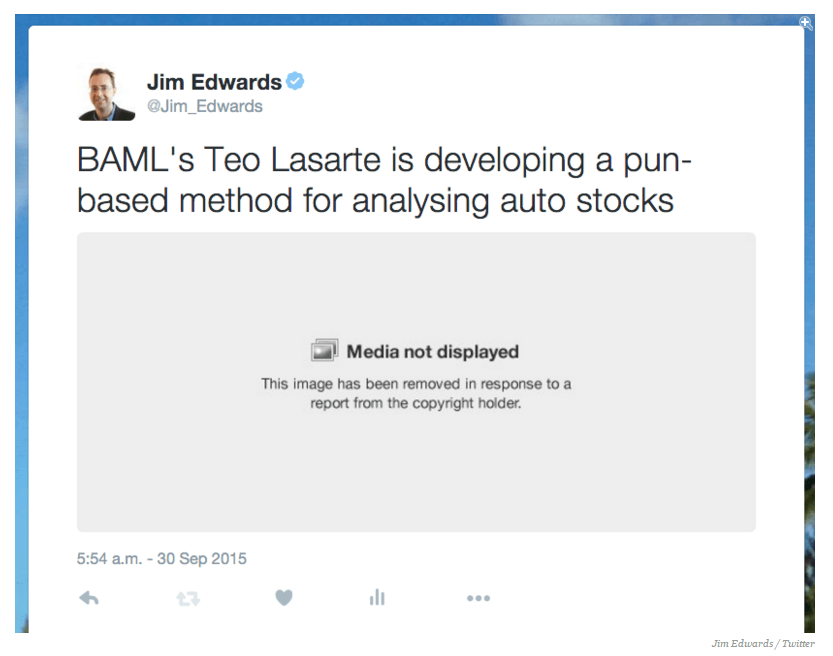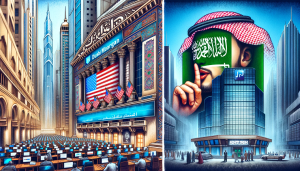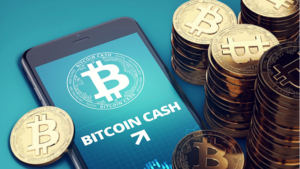The Orwellian dystopia of Bank of America Merrill Lynch: Bank begins getting Twitter posts deleted
Back in 1949, George Orwell published a very insightful and detailed account of how he viewed the way of life of the future. In his book 1984, he painted the picture of a dystopian world in which a central supercomputer monitors the activities of every individual, and how the ‘Inner Circle’ keeps tabs on the […]

Back in 1949, George Orwell published a very insightful and detailed account of how he viewed the way of life of the future.
In his book 1984, he painted the picture of a dystopian world in which a central supercomputer monitors the activities of every individual, and how the ‘Inner Circle’ keeps tabs on the ‘Outer Circle’ via the use of ‘Telescreens’.
70 years ago, this may have appeared the stuff of science fiction, but today, the Orwellian traits of certain large entities, whether public or private, are most certainly present.
George Orwell’s prediction of dystopia was one dominated by intrusive surveillance and faceless interference – which is what certain individuals are accusing Bank of America Merrill Lynch of this week.
With social media phenomena such as Twitter being used for commercial purposes as well as private, Bank of America has allegedly been monitoring the way Twitter is being used and requesting that certain posts are deleted, a course of action that has been successful on the part of Bank of America Merrill Lynch thus far.
Just a few days ago, Jim Edwards, a journalist at Business Insider in Britain, was the subject of Bank of America Merrill Lynch’s wrath.
The financial institution requested that Twitter remove tweets of the Founding Editor of the British edition of Business Insider, which referred to the analysis of auto stocks.
One of the tweets read “BAML’s Teo Lasarte is developing a pun-based method for analyzing auto stocks.”
“BAML” acronym refers to Bank of America Merrill Lynch. The tweet included a screenshot that has been deleted.
Mr. Edwards said
“The tweets were ‘probably trivial’, but cannot really be more specific in part because the frequent Twitter user can’t even remember exactly what they were about. I have no idea what Twitter agreed to censor for BAML, and no way of guessing what BAML’s objection was really about, or if it was even BAML who made the complaint.”
On Tuesday last week, Bank of America Merrill Lynch explaind to news website arstechnica.com that the tweets by Mr. Edwards “violated the bank’s copyright and that if he kept it up, they’d see to it that his Twitter account was deleted.”
Mr. Edwards considers Bank of America Merrill Lynch’s claim to be frivilous because he tweeted only a small number of Teo Lasarte’s clients.
He considers that if he had tweeted a PDF of the entirety of information, for anyone to download, then this would be a potentially legitimate claim for breach of copyright.
However, copyright law in the UK and the US contians a clause which covers “fair use” in news stories, and i therefore an exemption.
This means that journalists and commentators can quote, or show a snippet of, a copyrighted work to illutrate a point in publishe news or criticism on the same basis as TV broadcasting companies being able to show snippets of movies for preview without paying, as long as they do not distribute or broadcast the entire moview without permission.
Social media is a vital channel these days for all financial services market participants, and therefore the censoring of its content by large firms is a very interesting direction and one step closer to life in Airstrip One under the supervision of Big Brother.

Twitter screenshot courtesy of Jim Edwards









